Mehndi (Hindi: मेहँदी, Urdu: مہندی) is the application of henna as a temporary form of skin decoration in the Indian Subcontinent, as well as by expatriate communities from these areas. Mehndi decorations became fashionable in the West in the late 1990s, where they are sometimes called henna tattoos. Henna is typically applied during special occasions like weddings and festivals like Diwali, Bhaidooj, Teej and Eid. In some Hindu festivals every woman tries to have Henna done on her hands and feet. It is usually drawn on the palms and feet, where the color will be darkest because the skin contains higher levels of keratin which binds temporarily to lawsone, the colorant of henna. Henna was originally used as a form of decoration mainly for brides.
In the modern age usually people buy readymade Henna cones, which are ready to use and make painting easy. But in rural areas in India women grind fresh henna leaves on sil (grinding stone) with added oil, which though not as refined as professionally prepared henna cones, brings much darker colors.
The term henna tattoo is figurative, because true tattoos are permanent surgical insertions ofpigments underneath the skin, as opposed to pigments resting on the surface as is the case with mehndi.
Likely due to the desire for a "tattoo-black" appearance, many people have started adding the synthetic dye p-Phenylenediamine (PPD) to henna to give it a black colour. PPD is extremely harmful to the skin and can cause severe allergic reactions resulting in permanent injury or death. Alata (Mahur) is a flower-based dye used to paint the feet of the brides in some regions of India. It is still used in Bengal.
Popular brands of mehndi include Pakeezah, Golden, Dulhan, Zoom Golden, Baybe, Kewlarinova and Karachi.
Henna paste is usually applied on the skin using a plastic cone or a paint brush, but sometimes a small metal-tipped jacquard bottle used for silk painting (a jac bottle) is employed. The painted area is then wrapped with tissue, plastic, or medical tape to lock in body heat, creating a more intense colour on the skin. The wrap is worn three to six hours, or sometimes overnight and then removed. When first removed, the henna design is pale to dark orange in colour and gradually darkens through oxidation, over the course of 24 to 72 hours. The final colour is reddish brown and can last anywhere from one to three weeks depending on the quality and type of henna paste applied, as well as where it was applied on the body (thicker skin stains darker and longer than thin skin).
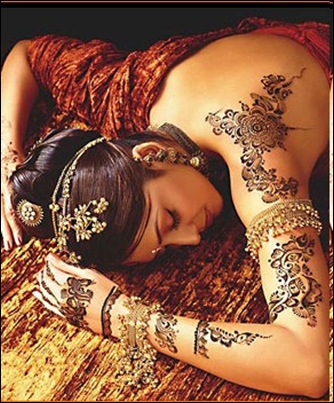
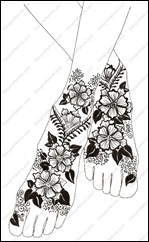
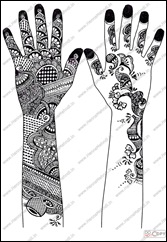
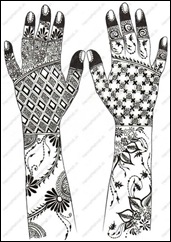

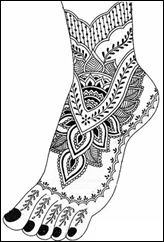
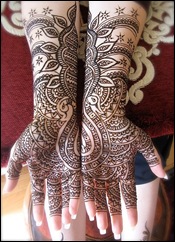

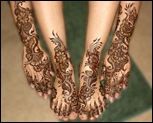
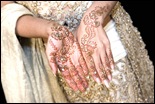
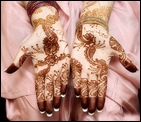
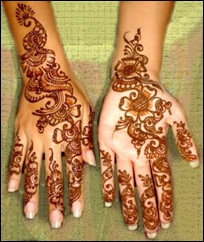

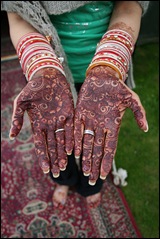
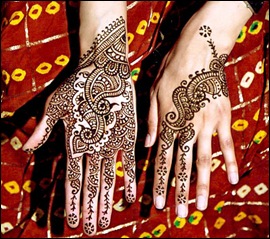
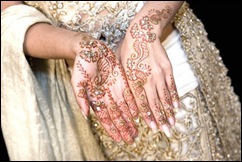

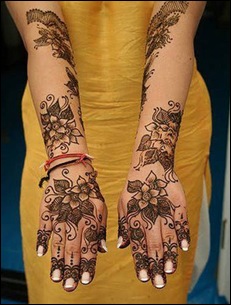
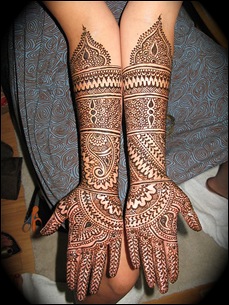
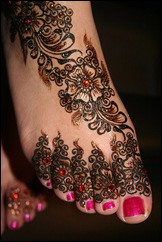
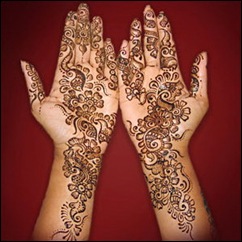
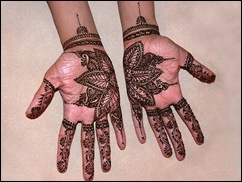
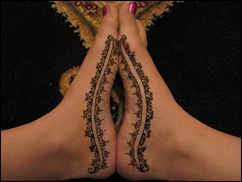
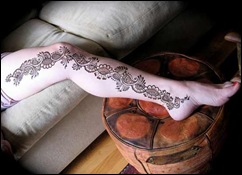

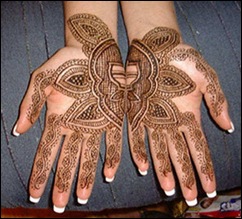
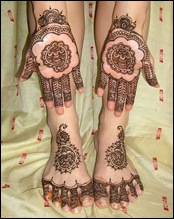
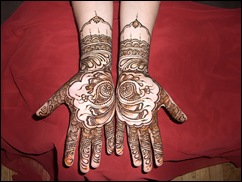

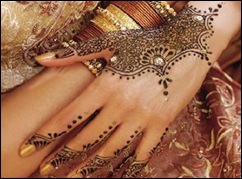
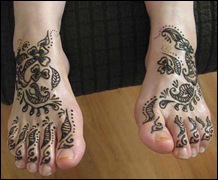
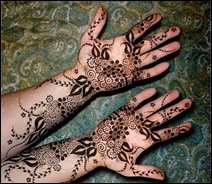
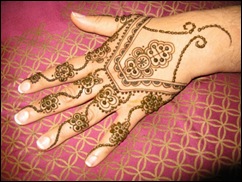

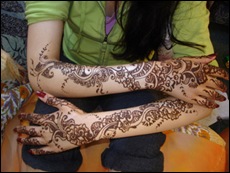

Hi,
ReplyDeleteany idea where we can get jag bottle in Pakistan?
Thanks
No idea, sorry.
ReplyDeleteany idea where to find jag bottles?
ReplyDelete